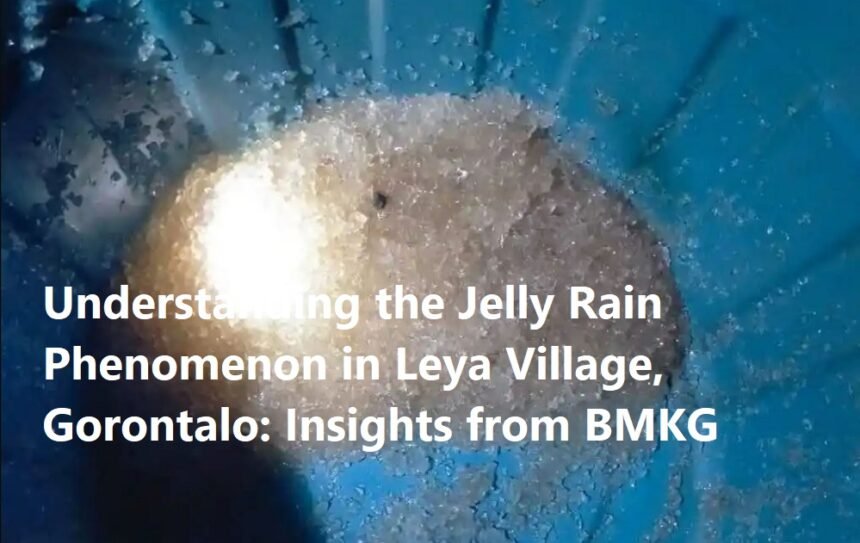In recent weeks, the unusual phenomenon of jelly rain in Leya Village, Gorontalo, has garnered significant attention from both the local community and scientific observers. The Meteorology, Climatology, and Geophysics Agency (BMKG) has provided crucial insights into this rare occurrence, helping to demystify the perplexing natural event.
Jelly rain, also referred to as “jellyfish rain,” involves the deposition of gelatinous substances that resemble jellyfish on the ground. This anomaly has been reported sporadically in different regions of the world, yet its occurrence in Leya Village presents unique scientific and environmental implications. According to BMKG, the phenomenon is typically associated with specific meteorological conditions that favor the formation of such organic matter in the atmosphere.
BMKG experts explain that jelly rain is not an indication of actual jellyfish falling from the sky but rather the result of airborne organic particulates. These particulates can be derived from various natural sources, including algae, spores, and detritus from marine ecosystems. In the case of Leya Village, local environmental conditions, such as humidity levels and wind patterns, may have contributed to the uplift of these organic materials into the atmosphere.
The agency further elaborates that certain weather conditions, including heavy rainfall and winds, can facilitate the transport of these particulates over extended distances. When these particulates are eventually deposited during rainfall, they may coalesce to form a jelly-like consistency, leading to the phenomenon observed by residents. The timing of jelly rain events often coincides with local climatic patterns, emphasizing the intricate interplay between weather and ecological systems.
In light of this phenomenon, BMKG has emphasized the importance of public awareness and scientific investigation. Locals have expressed concern regarding the implications of jelly rain on agriculture and public health. While the immediate effects of jelly rain on crops are still being examined, BMKG assures the community that the gelatinous substance is not toxic and poses minimal health risks. However, prolonged exposure or accumulation of organic matter could lead to secondary effects, including potential pest attraction or crop spoilage.
Furthermore, the jelly rain phenomenon presents an opportunity for researchers and environmentalists to study the interplay between land and marine ecosystems. The deposition of marine-derived material in terrestrial settings can significantly impact soil health and local biodiversity. It also prompts a re-evaluation of ecological interactions and nutrient cycles in the region.
BMKG encourages collaboration with local governments, universities, and environmental organizations to foster a comprehensive understanding of the phenomenon. By collecting data and educating the public, stakeholders can be better equipped to respond to similar occurrences in the future. Educational initiatives aimed at raising awareness about the natural processes that lead to jelly rain could help demystify the event and enhance community resilience.
In summary, the jelly rain phenomenon observed in Leya Village, Gorontalo, serves as a noteworthy example of the complex relationship between weather patterns and ecological dynamics. Insights from BMKG highlight the importance of scientific inquiry and community engagement in addressing the challenges posed by such unusual natural events. By fostering a collaborative approach to research and education, stakeholders can better understand the implications of jelly rain for the environment and public health, ultimately leading to a more resilient and informed community.













